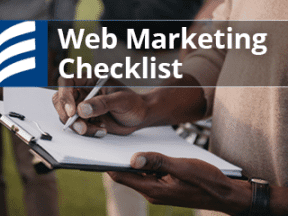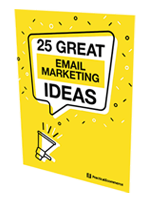A successful campaign on Kickstarter, the crowdfunding platform, can help validate a business and a product. Cathryn Lavery, the founder of BestSelf, a producer of productivity journals and tools, used Kickstarter in 2015 to launch her company.
This is episode 14 in my series on building an ecommerce business from the ground up. The previous installments are:
- “Part 1: Choosing Partners,”
- “Part 2: Selecting Platforms,”
- “Part 3: Early Days,”
- “Part 4: Copywriting Matters,”
- “Part 5: Paid Acquisition,”
- “Part 6: Hiring Employees,”
- “Part 7: Shipping and Fulfillment,”
- “Part 8: Customer Service,”
- “Part 9: YouTube Strategy,”
- “Part 10: Apparel Sales, Manufacturing.”
- “Part 11: Selling on Amazon.”
- “Part 12: Acquiring Companies.“
- “Part 13: Raising Money.”
I recently spoke with Lavery about her experiences on Kickstarter and on starting BestSelf. What follows is our entire audio conversation and a transcript, edited for length and clarity.
Eric Bandholz: You’re the founder of BestSelf, which sells productivity journals and tools. Tell us about the business.
Lavery: We started in 2015 with one product — the Self Journal — on Kickstarter. That’s our flagship product. Since then, we’ve gone into other productivity tools around goal setting or achieving something. If you’re a writer, we have the Wordsmith Deck that helps you write every day.
Our Edison Deck helps you come up with ideas. Everything that we create is based around helping you achieve something or improve your life.
Bandholz: I have never done a Kickstarter campaign. What should entrepreneurs expect if they’re going to launch on Kickstarter?
Lavery: Some people make the mistake of thinking, “I’m going to put my project on Kickstarter and people are just going to give me money.” That’s not the best approach. Kickstarter is great for validation that people like your idea. There’s no better validation than someone giving you something before you make it.
You’re essentially pre-selling your product. The great thing about crowdfunding as a platform is people are there to buy your story. The reason we went to Kickstarter is that we didn’t have the money to do an initial run of our product.
Our goal was $15,000. We ended up hitting $322,000 in 35 days.
We’ve still not raised funding elsewhere. That’s a huge validation in getting that amount of money. And we’re not giving equity. We’re pre-selling our product.
Bandholz: Was that $15,000 to build the business or more of getting the product out there?
Lavery: It was based on a minimum order of 1,000 units with some left over to sell. We were funding 1,000 units at the price we had to sell it at, but not at our purchase price. You need to create some margin for yourself.
Bandholz: Getting that validation is great. How much of that was just from Kickstarter and how much was from your public relations efforts?
Lavery: We had built an email list for the three months prior to the Kickstarter. Kickstarter has an algorithm. The most popular projects will come up first. Those are based on the number of backers that pledge rather than the amount pledged. One thousand backers pledging $1 each is better than 10 backers pledging $100 each.
Bandholz: How were you able to build up your email list?
Lavery: We started from scratch in, I think, April 2015. We launched on Kickstarter in August. We went from no subscribers to roughly 3,200. We did a giveaway through KingSumo — productivity software, bulletproof coffee, books. I think there was about $800 worth of stuff. That got us about 1,600 email addresses.
Bandholz: What are the checkboxes to have a successful Kickstarter campaign?
Lavery: Definitely produce a video; that’s a no-brainer. When people try to launch on Kickstarter without a video, I’m like, “What are you doing?” Also, reward levels that make sense. So if you’re selling a certain product, everyone just wants that product. They don’t want a t-shirt.
We started with eight reward levels — a journal, two journals, four journals, eight journals, 10 journals. Towards the end, we added a cover. The key is to make the rewards super simple to get, so people don’t have to ask questions. You also want early bird rewards when you start.
Bandholz: What about Indiegogo or similar platforms?
Lavery: I’ve only done launches on Kickstarter. There is more traffic — more people are shopping there. A lot of folks launch on Kickstarter but then they go InDemand at Indiegogo, which is technically a second fund on Indiegogo once your Kickstarter ends.
Bandholz: What are the realistic time frames for people on Kickstarter to expect to receive the item?
Lavery: If you’re new to the product, take what you think you can do and then double it. Then don’t promise delivery. Don’t ever say, for example, “It’s going to be there by Christmas.”
The worst thing is when you have to delay it even a little. That creates an issue.
Bandholz: So you launched the Self Journal on Kickstarter in 2015 and then, in 2018, a new, separate item. How many products have you launched off of Kickstarter?
Lavery: We have about 20 products right now.
Bandholz: What have you learned from Kickstarter that helps with the private launches?
Lavery: Kickstarter forces you to create promotional assets for the product before it exists. Creating a story around each product is so important. We have a process now of creating a story around a product before it launches.
Bandholz: One last question as we wrap with Kickstarter. How do you maintain the communications with the funders on Kickstarter after the campaign and before the product comes in?
Lavery: We didn’t initially have a strategy. But the better way to do it is to communicate more than less. Most people won’t read all of the messages. But then you have these hard-core buyers that wait for the updates. Every two to three weeks is standard for a good communication frequency.
Bandholz: Where can our listeners and readers learn more about you and your business?
Lavery: Go to BestSelf.co. My personal website is LittleMight.com. I have a lot of crowdfunding resources there. I get asked frequently about Kickstarter. I have blog posts about exactly what we did, how we built our email list, how you do a video, simple things like that — all on LittleMight.com.
See the next installment, “Part 15: Content Essentials.”





